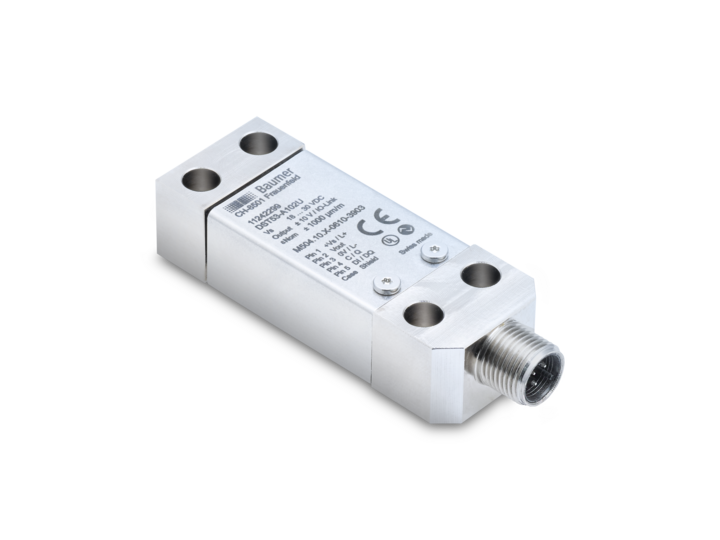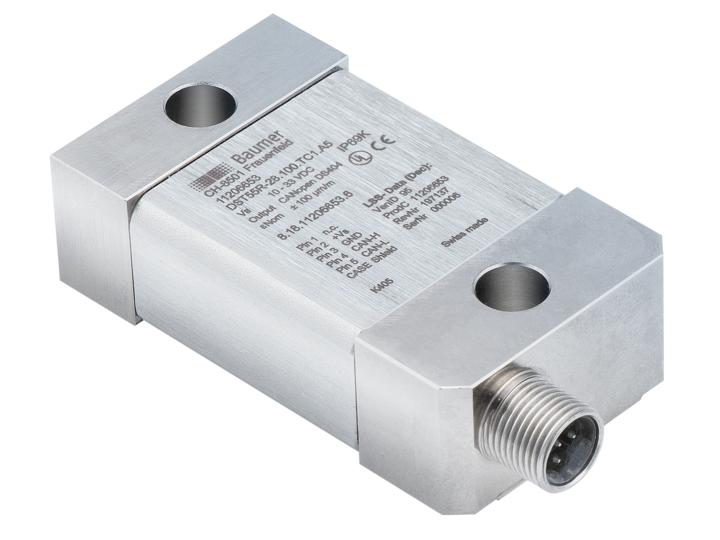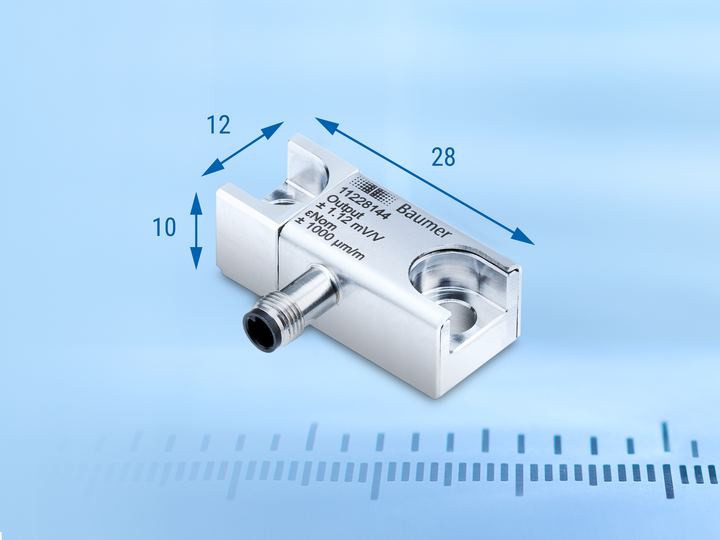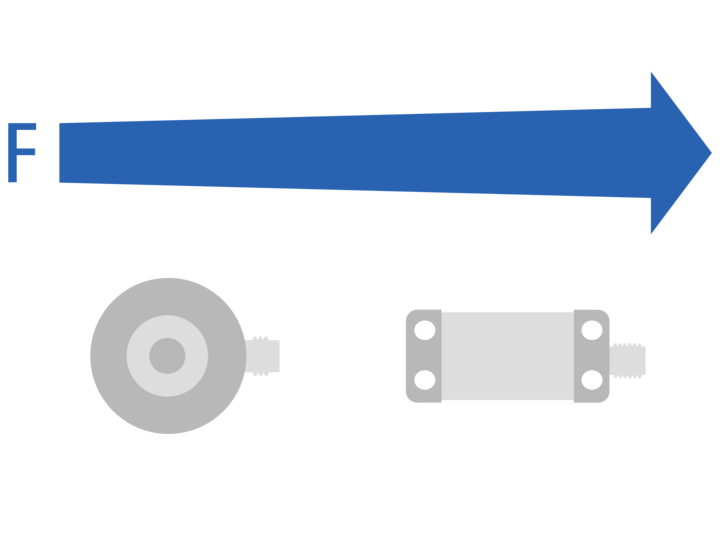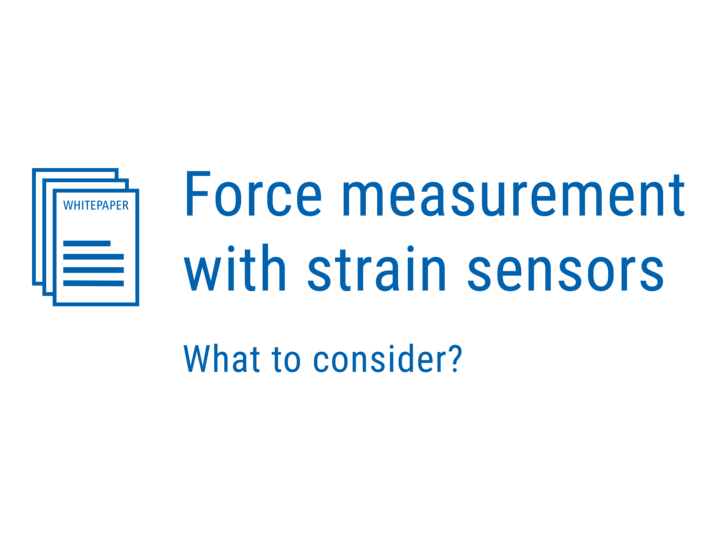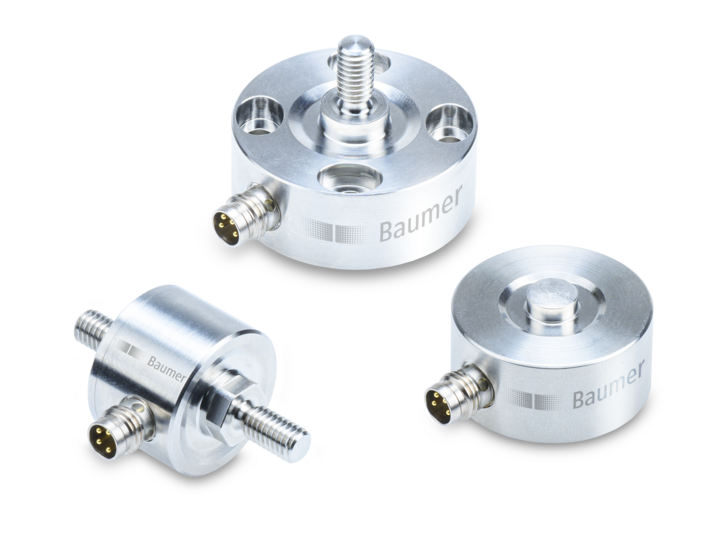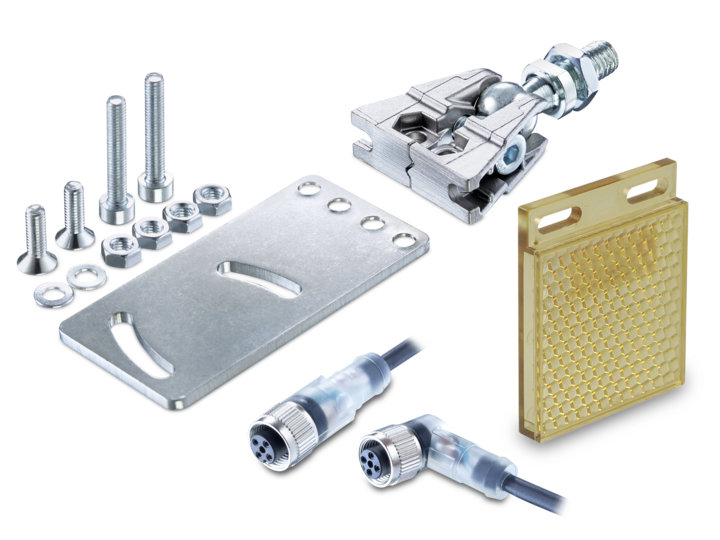产品系列
Highlights
For higher force ranges and large constructions, strain sensors are a suitable alternative to force sensors. Unlike force sensors, strain sensors are not installed directly in the force flow but screwed onto the relevant component surface. The detected surface strain allows for precise force identification without elaborate component modifications.
The product portfolio covers the entire sensor range to meet multifacted requirements and specific applications. The portfolio excels in terms of miniaturized and robust products as well as digital connectivity. Consistency that pays off.
Which strain sensor is the right one for your application, how force measurement with strain sensors is implemented and at which position a strain sensor should be mounted, you will find out in our whitepaper.
微型化——非常节省空间
坚固——在苛刻的环境中确保超高操作安全性
Smart force measurement – simulation, parameterization, intelligent evaluation
产品亮点
Baumer strain sensors enable cost-effective force measurement for nearly all application areas. Regardless of whether for limited spaces, in robust outdoor applications, or in the industrial sector, we always offer you the right solution for measuring large forces in ongoing processes.
Videos for easy parametrization
Adapt the Baumer force and strain sensors to match your application task of precise force measurements and benefit from smart features for maximum results. Used in combination with the Baumer Sensor Suite, you will fully exploit the capabilities of the force and strain sensors thanks to specific Add-ons and the intuitive user interface. Watch the tutorial and learn more about the Baumer IO-Link portfolio of force and strain sensors.
给您带来的益处
- 力传感器测力的理想替代方案
- 轻松集成至现有的机器和系统中
- 大大减少设计工作量
- 提高机器性能
- 过程参数的精确测量和可靠控制
- 优化物流管理
- 只需一款传感器,即可应对不同尺寸的机器
- 缩短维修时间
- 出厂前已完成应变校准,维护期间传感器更换方便,无需在机器中重新进行耗时的校准工作
- 传感器的安装和拆除更加快速、简单
技术
堡盟应变传感器通常由弹性体和应变片组成。应变传感器通过螺栓固定到机械构件上。机械构件在力的作用下发生形变,形变通过摩擦力被弹性体捕捉到,导致材料表面发生应变。该应变通过贴在弹性体表面的应变片测得。应变片将机械应变转换为电阻变化,相当于一个机械电子信号转换器。各应变片以特定方式连接成惠斯通电桥,即便是微小的应变也能测量到。这样,借助应变片测得的应变可以很容易地通过内置的放大器进行处理,同时此应变和应力的变化成正比。
下载
手册 / 产品目录
技术报告和应用报告 / 白皮书
-
技术报告:DSRT应变传感器实现低成本测力
-
技术报告:高性价比的夹紧力监控方案
-
技术报告:采用应变传感器实现创新式减振
-
技术报告:使用DST55R应变传感器间接测力
-
WP – Force measurement with strain sensors




